SPORT INTEGRITY MATTERS
ISSUE 13 | JUNE 2023
SAFEGUARDING AT ALL LEVELS
New program for sports

PARTNERSHIPS ONLY LIMITED BY IMAGINATION
Threats to Sport Integrity conference
STEROID USE IN YOUNG ADULTS
A worrying trend
THE PARA EVOLUTION
An athlete's view
© Commonwealth of Australia as represented by Sport Integrity Australia 2023
PERMITTED USES
This publication is not for general distribution. You may download, display, print and reproduce the whole or part of this publication in unaltered form for your personal use or, if you are part of an organisation, for internal use within the organisation to perform your duties or functions of your role. You or the organisation must not use the reproduction for any commercial purpose and retain this copyright notice and all disclaimer notices as part of that reproduction. This publication is copyright. Apart from uses permitted by the Copyright Act 1968 and this copyright notice, all other rights (including all commercial rights) are expressly reserved.
DISCLAIMER
The content of this publication is provided for information purposes only. The contents do not constitute legal advice and should not be used as such. Formal legal advice should be sought on particular matters. While the information contained in this publication has been formulated with all due care, the Commonwealth or its partners do not accept any liability to any person for the information (or the use of such information) which is provided in this publication or incorporated into it by reference. This publication contains links to external websites that the Commonwealth has no direct control over. It is the responsibility of users to make their own decisions about the accuracy, currency, reliability and completeness of information contained on linked websites. Links to external websites do not necessarily constitute an endorsement or a recommendation of any material on those websites or any third party products or services offered by, from, or through those websites.
For further information please contact communications@sportintegrity.gov.au.
FEEDBACK

Do you have a story about an integrity issue that you want to share with the sports community through future issues of Sport Integrity Matters? Send an email to communications@sportintegrity.gov.au
All feedback is appreciated.
CONTENTS MESSAGE FROM THE CEO 3 THE PARA EVOLUTION How sport changed my life 4 PARTNERSHIPS ONLY LIMITED BY IMAGINATION The third annual Threats to Sport Integrity conference 8 WE MUST CALL OUT RACISM: CEO 15 SAFEGUARDING OUR SPORT Collaboration for Impact podcast 16 EMBEDDING SAFEGUARDING AT ALL LEVELS Safeguarding in Sport Continuous Improvement Program 20 CLUBS UNDER PRESSURE Australian Sport Foundation report 23 THE WORRYING TREND OF STEROID USE IN YOUNG ADULTS 24 WINTER SUPPLEMENTS WARNING 25 CYBER ALERT Cyber Safety and Security in Sport eLearning course 26 GLOBAL ANTI-DOPING EDUCATORS SUMMIT 2 7 GAMBLING: A GLOBAL ISSUE FOR SPORT INTEGRITY 28 GLOBAL EXPERTISE AT TUE SYMPOSIUM 29 SNAPSHOT OF GLOBAL ISSUES 30
MESSAGE FROM THE CEO
Sport globally is at an intersection. Every day we see in the media stories of abuse, racism, corruption and cheating in sport.
Everyone is talking about it, many are responding to it but many are not.
There are so many elements to sports integrity particularly abuse in sport, that no one agency, no one country can manage these issues alone.
Coordinating the response and sharing experiences is central to protecting everyone involved in sport and providing a path to heal from historical abuse.
The power for change comes from partnerships.
From listening, from being victim focused Sport Integrity Australia recognises the challenges and fully understands that they cannot address the multitude of issues alone, no one size fits all.
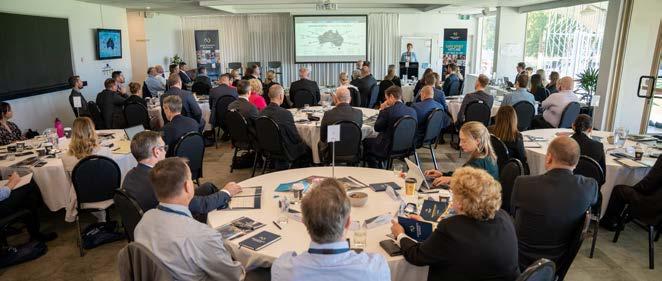

In Australia it has been critical for all parties to come together to coordinate a response.
I have been overwhelmed by the desire of sports, government, well-being agencies, and athletes past and present to come together to address the issues we are facing.
While the current solutions aren’t perfect, the foundation now exists to make the necessary changes. But as we listen and learn along the way we won’t be successful if we don’t work together.
Sport Integrity Australia’s Safety in Sport Division provides athletes with a safe place to tell their story. It is where support and culturally appropriate responses are available.
The Safety in Sport Division will provide guidance and play a coordinating role to assist athletes in navigating the maze of options linking athletes with the responsible bodies, if we can’t resolve the issue we will identify who can.
It is our role to build a safe, trauma informed, nationally coordinated capability while at the same time identifying gaps in the system. We have started, we are learning, but importantly, we are building the foundations for the future.
Victims should not be retraumatised by telling their story over and over and Sport Integrity Australia must lead the response in finding a way to fill the gap of historic abuse reporting. There may not have been policies or legislation in place at the time of
historic abuse to enable actions now but that doesn’t mean victims cant tell their story, be believed and force change. People still need to be held to account for their actions.
It is a complex environment with a variety of policy and legislative responses and in some cases there is no existing authority, we need to help athletes through the forest. Our job is to protect sport and make it safe. We need to listen and learn from the past to be able to move forward.
We still have a long way to go. But it is not Sport Integrity Australia’s role alone. Everyone needs to own it.
Everyone needs to be accountable. People need to stop hiding, stop finding ways to make it someone else’s problem.
If we all own it, we can change it. For good.
Sport unites us, so why are we still divided ? It is why we must work together.
David Sharpe APM OAM Chief Executive Officer

While the current solutions aren’t perfect, the foundation now exists to make the necessary changes. But as we listen and learn along the way we won’t be successful if we don’t work together.
SPORT INTEGRITY MATTERS | ISSUE 13 3
The third annual Threats to Sport Integrity conference.

4 SPORT INTEGRITY MATTERS | ISSUE 13
© Serena Corporate Photography
THE PARA EVOLUTION
How sport changed my life
The changing landscape of Para sport through the eyes of Paralympian, Richard Nicholson.
I lost the use of my legs at the age of four through illness. There are family photos of me walking around as a toddler, but it was so long ago I can’t remember it now. So perhaps it is like the old saying that “you can’t miss what you never had”.
Growing up I was lucky that I never felt any jealousy or resentment of my able-bodied friends, but I did often feel very frustrated. Deep down I knew it wasn’t my fault I couldn’t walk or run, so I think I just accepted that fact and got on with my life.
I suppose at an early age I learnt two simple rules. One is that life’s not always easy. And the second, in the words of some great 20th century philosophers – The Rolling Stones –“you can’t always get what you want, but if you try sometimes, you just might find, you get what you need”. I feel this has been very true for me.
At age seven, my parents bought me a skateboard which I rode on my knees. For years I wore the prints off my fingertips, following my friends around the Canberra suburbs on that skateboard. I loved my skateboard; it gave me independence. Skinned knees and elbows taught me valuable lessons: if you have a buster, you pick yourself up, dust yourself off and go again.
SPORTING ORIGINS
My sporting journey began in 1982 at age 12 in archery. Less than a year later, I began training and competing in mainstream gymnastics thanks to the encouragement of my school PE teacher. I was competing against able-bodied athletes, and I was forced to land on my knees. As this constitutes a “fall”, my routines were always marked down accordingly.
The better I became on the apparatus the less competitive I became overall, as the penalty for landing on my knees was
far too much to give away. So my gymnastics career finished at age 18 but through gymnastics I developed some physical and psychological attributes that laid the foundations for an elite sporting career.
I took my first overseas holiday with two friends to the west coast of the United States, where we stopped in Hawaii for a few days R and R on the way home and I met Bruce.
Bruce owned the ‘Never Ending Pub Crawl’ in Waikiki. Turns
out he made some money Arm-wrestling in the US and took one look at my physique, big shoulders, arms and skinny legs and said “sit down I’m going to make you a champion!”.
I spent the rest of the night drinking with Bruce for free while he taught me the tricks of competitive arm wrestling and encouraged me to go home do ‘monster arm curls everyday’ and come back in six months.
Unfortunately, I didn’t make it back to Waikiki, but it did re-ignite a spark in me to get involved in sport again. On my return I contacted the ACT Disability Sport Association and literally picked a sport off a whiteboard – Powerlifting. My first disability-specific sport.
I had never lifted a free weight bench press before, but in under two years I was benching 150kg, over two and half times my bodyweight and was the national champion in my weight class. My Paralympic journey was about to begin.
PARALYMPIC JOURNEY
My first Paralympic Games was in Atlanta in 1996 at the age of 26. I had some previous international competition experience in New Zealand, Noumea, Netherlands, and Belgium national championships. But the Paralympics is another level altogether.
While driving into the Olympic/Paralympic village for the first time, my excitement quickly turned to dismay. There were workman everywhere literally dismantling large parts of the village; all the “good parts”, as it were.
The 1996 Olympic Games were largely funded through commercial sponsors and many of these withdrew their support for the Paralympics.
SPORT INTEGRITY MATTERS | ISSUE 13 5
Having just watched the Atlanta Olympic Games on TV I felt the Paralympic Games were now seen as more of an obligation, something that had to be delivered, rather than a celebration of sporting excellence and human triumph.
Physically I was well prepared for Atlanta but psychologically I was not in the elite athlete “ballpark” and did not place. Luckily, I have found disappointing results to be highly motivating so returned home to get ready for our home games in Sydney.
The luxury of being an athlete and having a home Games is something I feel very privileged to have experienced. Thinking about marching into the Olympic Stadium with my fellow team members with Midnight Oil blaring from the speakers and 110,000-strong crowd cheering us on still gives me goose bumps.
My best performance as an athlete was the Sydney games. I executed three successful lifts, each with three white lights from the referees. Weighing 58.1 kg, the lightest in the 60kg division, I bench-pressed 175kg. It was a personal best, a new national record for the 60kg division, and the first ever triple my bodyweight bench-press for an Australian. It was also good enough to win the silver medal on that day.

Another unexpected highlight came while I was walking through Olympic Park on my way to watch some athletics when a small boy holding his mum’s hand and pointing at me with the other said “I wonder what sport that man plays”.
This remains one of my most memorable moments from those Games, as for the previous 26 years inquisitive young minds would generally say “what’s wrong with that man Mummy” or “why does he have those” (pointing to my
crutches). This very young man changed my understanding of sport for people with disability and my role within it. No longer was my involvement in sport simply about results and challenging myself but my role was also to promote sport as a vehicle for greater social inclusion and understanding of disability.
I realised sport can change the perception of the community about people with a disability and, more importantly, how people with a disability think and feel about themselves. I have been lucky to be part of the Paralympic movement for more than 20 years and seen not only the games evolve in size and prestige, but more importantly the attitude and acceptance of the athletes change over that time.
THE PARALYMPICS EVOLVE
Sydney’s successful delivery of the Olympic and Paralympic Games created a blueprint that has essentially been moulded to fit each new host city and culture.
The increase in media coverage at the Sydney Paralympics saw an almost meteoric rise in profile of Australia’s Paralympic athletes during and after 2000.
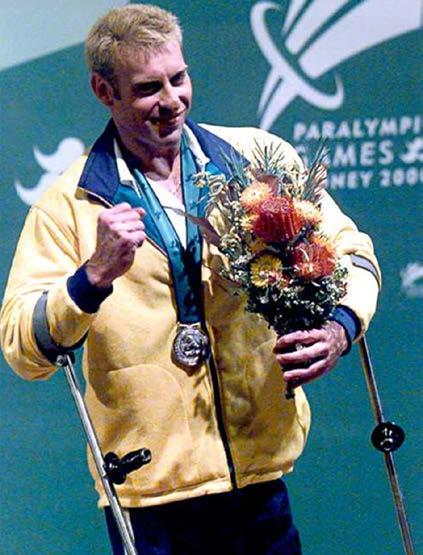
Athletes’ results and stories were featured in Australia’s leading newspapers and the Australian public seemed to embrace the athletes and the stories behind their results.
The 2004 Athens Paralympics was a great experience hosted in the spiritual home of the Olympic Games. By the 2008 Beijing Paralympic Games the funding and services provided to the Paralympic athletes via the Australian Sports Commission, Australian Institute of Sport and the
6 SPORT INTEGRITY MATTERS | ISSUE 13
No longer was my involvement in sport simply about results and challenging myself but my role was also to promote sport as a vehicle for greater social inclusion and understanding of disability.
SIlver at Sydney 2000
State Institute and Academy network had significantly increased. This facilitated Australia’s best Paralympic athletes to not only train alongside our able-bodied peers but receive funding to help with other costs.

Outside of opening and closing ceremonies, the Beijing Paralympics was the first time I had experienced a full stadium for competition. The “Bird’s Nest” stadium was at near capacity of 80,000 almost every session, morning and night, for the entirety of the Games.
The Australian television coverage of the Beijing Paralympics was hosted by the ABC, which dedicated an entire channel to covering ten hours a day. The unprecedented crowds at all venues during the Beijing Games demonstrated that the Paralympic movement was still on a steady ascent in terms of its acceptance, popularity and value.
The London Paralympics in 2012 provided me with numerous highlights and firsts. On the bus from Heathrow to the Paralympic village for the first time, I noticed Paralympic athletes’ photos adorning large billboards, the entire side of a building, and on the back of buses or taxis. This level of promotion had not occurred in any host city I had previously been too.
Like Beijing, the venues and sessions across the Paralympic program were a near sell out. Inside the 80,000 main stadium athletics fans were lapping up some of the most extraordinary athletic performances to date.
There was one night while I was spectating when something happened in the stadium that changed my perception of the Paralympics. In that moment I knew that the Paralympics had arrived.
It was the final of the T44 100m, a race for athletes with a below knee amputation. On the start line was the now infamous Oscar Pistorius from South Africa lining up against Jonnie Peacock from Great Britain among the rest of the field.
The 80,000 strong crowd started chanting “Peacock… Peacock… Peacock”. It was akin to David Beckham taking a penalty for England in a World Cup match. I had no idea who Jonnie Peacock was. I knew he had not run at this level before, but 80,000 others in stadium knew who he was.
SPORTING RECORD
5 PARALYMPIC GAMES |3 COMMONWEALTH GAMES
Powerlifting
2002 Silver medal Commonwealth Games
60.0kg division – Manchester, England
2000 Silver medal Paralympics
60.0kg division – Sydney, Australia
1996 8th place Paralympics
56.0kg division – Atlanta, USA
Athletics
2012 Bronze Paralympics 4 x 400m relay – London
2004 Silver Paralympics 4 x 100m relay – Athens
The sound was so loud that Peacock himself had to shush the crowd for the start. The atmosphere in the stadium was tangible. The silence before the gun, the eruption of the crowd after the gun, this was a crowd captivated by competition. Forgotten were the disabilities and carbon prosthesis, this was elite level sport, athlete vs. athlete, country vs. country and the bragging rights that go with it.
I can take considerable pride that I have played a small part to help build the reputation of the games, the professionalism of the athletes and feel the legacy is in great hands with our current Australian team members.
Elements of this story were first published in The Conversation in 2016. The author has updated his story to continue his sporting journey.
After competing at an elite level, and then turning his attention to working in disability sport, Richard Nicholson now works at Sport Integrity Australia as a Partnership Manager working directly with National Sporting Organisations to help mitigate integrity threats in their sport.
Read more on the Sport Integrity Australia blog including Richard’s sporting successes, insight into each Game’s experience, and how Richard used his sporting experiences to enhance disability sport.
SPORT INTEGRITY MATTERS | ISSUE 13 7
Richard (right) winning bronze in the 4x400m relay at the 2012 Paralympics alongside Richard Colman, Matthew Cameron, Nathan Arkley
© Serena Corporate Photography
IMAGINATION

ONLY LIMITED BY
PARTNERSHIPS
8 SPORT INTEGRITY MATTERS | ISSUE 13
The third annual Threats to Sport Integrity conference was held in Brisbane in May. The closed conference, co-hosted by Queensland Police, featured representatives from 28 agencies from law enforcement, child protection, intelligence, regulatory and sport.

With 28 agencies represented in the room, “this is where we need to be and we need to expand even further ... these partnerships should only be limited by our imagination.”
There are many challenges ahead, Sharpe said, many we aren’t even aware of yet.
The theme of the conference was “Safeguarding our Sport" and the aim was to build a strong, cohesive framework that would enable an effective and enhanced partnership between Sport Integrity Australia and our stakeholders to address integrity threats to Australian sport now and into the future.
He said the 2032 pathway of sporting events is exciting for Australia but also provided a blueprint for organised crime to build their operating model to exploit vulnerabilities in the system.
“This very pathway of events presents us with a key opportunity to come together and put a protective ring around sport,” he said. “Brisbane 2032 gives us a target for changing the culture of sport, to change the behaviours of the coaches, parents and fans, to change online behaviours and attitudes towards discrimination and racism.
“We can dare to dream about putting sport back on the back pages.”
Our Threats to Sport Integrity conference has grown as the challenges we face have grown, Sport Integrity Australia CEO David Sharpe said.
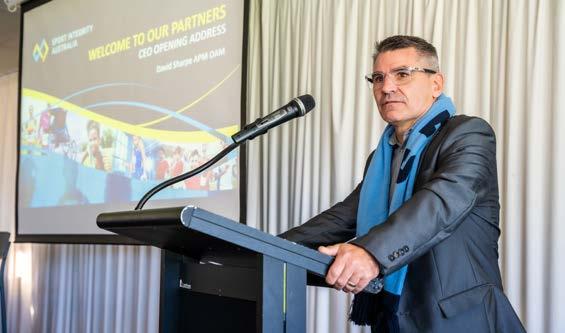
Sport is meant to strengthen communities, it is meant to be about participation, celebration, a sense of belonging, of discipline, he said, but more and more sport integrity issues globally continue to dominate the media.
From the corruption in sports governing bodies, sophisticated doping in global sport, systemic abuse, racist slurs to cowards hiding behind their keyboards using social media to vilify, harass and abuse athletes. Then there’s technological doping and the threat of streaming lower-level sports thereby creating betting markets that operate under the radar.
“The huge range of integrity in sport issues cannot be tackled by one agency alone,” Sharpe said in his opening address. “We don’t have all the answers, we don’t always get it right – but central to building a sport integrity agency for Australia is the strength of the Aussie way – through partnerships.
“This conference is an opportunity to strengthen and expand our partnerships, to plan ahead.”
David Sharpe
SPORT INTEGRITY MATTERS | ISSUE 13 9
Brisbane 2032 gives us a target for changing the culture of sport, to change the behaviours of the coaches, parents and fans, to change online behaviours and attitudes towards discrimination and racism.
SAFEGUARDING PARTICIPANTS
Presentations on the conference's first day were focused on child protection, athlete safety within a sporting environment, complaint management and developing responses to abuse.
Sport Integrity Australia Deputy CEO Dr Sarah Benson said the conference was an opportunity to work in harmony to strengthen collaborative efforts to protect sport.
“It’s an opportunity to engage early at all levels, ensure there are no gaps and to create a shared understanding of our environment and shared effort,” she said.
That is why Sport Integrity Australia has signed Memorandum of Understandings with law enforcement across all states and territories − so the agency can share experience, resources, tools or information.

Susie Ball, Sport Integrity Australia’s General Manager –Operations, said these agreements allowed the agency and law enforcement to share information, training, liaison officers and technical and physical means.
“Our information referral system is operational and effective,” she said. “The information cycle between sport, our agency and our partners is in place.
“By integrating our efforts, we can strengthen the protective measures already in place. After all, we have 2032 reasons to get this right – as the pathway to Brisbane, for some, has already started.”
Australian Catholic University Professor Daryl Higgins revealed the findings of the Australian Child Maltreatment Study which showed 62% of Australians had experienced one or more types of maltreatment.
Concerningly, maltreatment is chronic, not isolated, according to the study, with two in five experiencing more than two types of maltreatment and one in four experiencing three to five types of maltreatment.
Professor Higgins also discussed the resulting mental health outcomes and health risk behaviours, with 48% of people who experienced child maltreatment having a mental health disorder compared to only one in five people who didn’t.
In a passionate address, Kate Alexander, the Senior Practitioner at the NSW Department of Communities and Justice, gave examples of system failings as a result of this abuse as she discussed the Royal Commission findings and how it shaped the NSW Practice Framework. She said her agency had learnt from these failures and spoke of her realisation that her role was not to say sorry but to empower – “they wanted us to feel their hurt, feel their shame and wanted us to put their resistance on the record”.
Alexander said the Royal Commission restored dignity by “bearing witness to their stories”. As one victim said: “I’ve waited 65 years for this day.”
Child disclosure was a process, she said, not an event.
“They’ll put out a little bit and see what response they get” and warned that victims were “at their greatest risk just after disclosure”.
She emphasised the importance of language, conceding “we have been hiding behind our words for many yearsand those words are designed to protect us not the children”.
“What children want is to be believed and what they want is to feel safe … let children know what you’re doing, keep them involved in the process. Let them know we believe you and we’re going to be with you.”
The key risk areas identified by the Royal Commission –such as transporting children and overnight stays – are still the same key increased risk areas that Sport Integrity Australia was seeing, according to Sport Integrity Australia’s Acting Director of Safeguarding Emma Gardner.
“Overwhelmingly the largest proportion of complaints [Sport Integrity Australia receives] involve children,” she said. Those complaints snowballed after the release of the documentary Athlete A, but “gymnastics is not an island”, she said.
“Sport Integrity Australia has created a policy framework which provides the safety and the functions for people to report, a framework that is trauma informed…. however, some sports are only adopting safeguarding policies now.
“We must remember that the child athlete grows up and we have a responsibility to safeguard that future athlete.”
Adding to the complexity of the issue is that, for many, sport can be “the one place where a child feels safe”.
Attendees also heard about the Tasmanian response to recent Commissions of Inquiry, which found that services for children and young people were disjointed, often contributing to individual trauma.
In addition to building multi-disciplinary approaches that align child protection, community services and law enforcement capabilities, the government response has focused on education and prevention, Liz Jack, the Deputy Secretary of Keeping Children Safe, said.
10 SPORT INTEGRITY MATTERS | ISSUE 13
By integrating our efforts, we can strengthen the protective measures already in place. After all, we have 2032 reasons to get this right – as the pathway to Brisbane, for some, has already started.
Yuggera Elder Uncle Steve Coghill welcomes attendees to Country.

AFP’s Nik Papagiannis and Chief Science Officer Dr Naomi Speers.


The Sport Integrity Australia team.


AFP's Kurt Wesche presents on the trends in sextortion.
Safeguarding experts (l to r) Kait McNamara (WA), Kate Alexander (NSW), Professor Daryl Higgins (Australian Catholic University), Emma Gardner (Sport Integrity Australia), Laura Armstrong (Vic), Liz Jack (Tas) and Neil Burgess (WA).

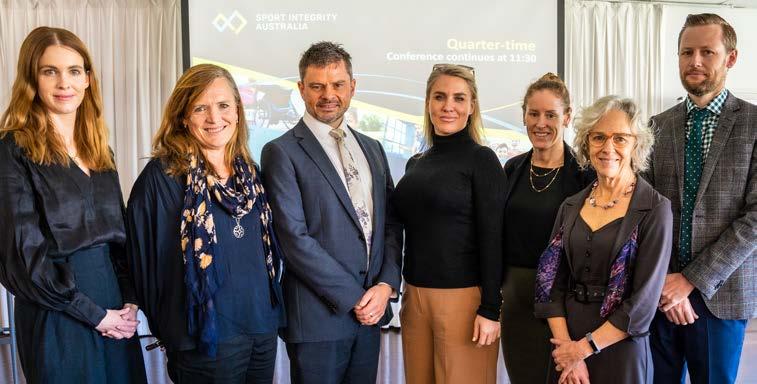
General Manager – Operations Susie Ball.
Professor Daryl Higgins presents the Australian Child Maltreatment Study findings.
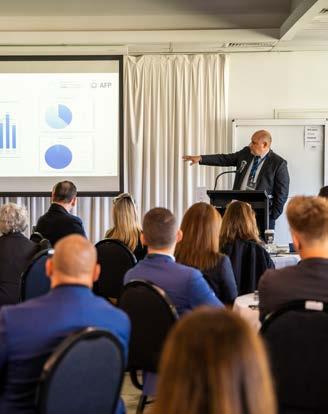 Clockwise from top left:
Clockwise from top left:
11 SPORT INTEGRITY MATTERS | ISSUE 13
Australian Sports Commission CEO Kieren Perkins at the conference dinner with MC Tim Gavel.
top sports
National Integrity Framework Complaints in 2022
Gymnastics
Equestrian
Swimming
Cycling
Softball
Motorcycling
Rowing
THRESHOLD CONSIDERATIONS

FOR POLICE
• Adherence to policy and legislation
• Complainant welfare
• Account from complainant
• How can it be corroborated?
• What evidence is available?
• Admissibility of evidence
• Charge/not charge, likelihood of conviction
• Protection of the Community
• Media
FOR SPORT
• Adherence to policy
• Report to the police – don't act as police
• Complainant welfare
• Consideration of protecting the reputation of the sport
• Media management
• Reputation of the alleged offender
• Not interfering with a police investigation
• Provisional action
• Supporting the club
• Trauma informed approach
• Who do we tell?
Boards, CEOs, other potential witnesses
A community education campaign, which is trauma-informed at every level, has been developed, with the simple message to: ‘Tell someone’.
“The more we talk about it, the less likely perpetrators will be able to hide,” she said. “The advantage of Tasmania being so small is that the state is communityminded and passionate; however, it has also meant people were often too trusting and good at keeping things hidden.
“Ultimately, it’s down to the people, not the system, which means we need to engage with them, including by listening to children and young people and building collaborative approaches with other agencies and the community.”
The conference also heard about the different response considerations for police compared to sport when managing a complaint, such as the different standards of proof and that rules of evidence do not apply to most tribunal hearings. While some matters may not result in police charge or action, the sport may still need to take action. Police were also reminded that the policies of the sport may assist their investigations as there is an obligation upon many participants bound by these policies to co-operate.
Brenna Dodds, Sport Integrity Australia’s Acting Director Integrity Complaints, outlined the themes and trends in sport complaint management.
The agency received 500 non-doping integrity matters in 2022, with 95% of National Integrity Framework matters relating to child safeguarding or member protection. Of those, 60% related to child safeguarding and 17% member protection.
Over 120 of those matters were referred to law enforcement.
She said 25% of all matters related to coaches, 14.4% to athletes, board/committee members (13.4%) and sporting organisations (9.7%).
The common behaviours included issues around professional boundaries, such as providing support that goes beyond the scope of a person's role, including support outside of the sport environment; the use of tone and language in training techniques and failure to provide a positive environment; and electronic communication, particularly over social media, one-on-one and in group chats. Complaints also included peer-on-peer abuse, including in competition, and verbal abuse and disputes between board members.
It should be noted that these sports adopted the National Integrity Framework quite early, she said, and have engaged in proactive education to ensure that their participants know when and how to report to Sport Integrity Australia. We also heard about the emerging trends in sextortion, sporting issues that need police support, how police could assist sport with sex crime investigations and the work being done in Western Australia to implement Sport Integrity Australia’s review findings into the Western Australian Institute of Sport Women’s Artistic Gymnastics Program.
SAFEGUARDING SPORT
The Queensland Commissioner Katarina Carroll opened day two of the conference which focused on the broader sports integrity threat environment, the law enforcement impact on performance enhancing drugs, organised crime in sport and match-fixing.

Commissioner Carroll said Queensland Police was proud to be the first agency to sign a MOU with Sport Integrity Australia last year because “we know that working in partnership is key to protecting sport and sporting participants”.
“Sport brings cultures together and makes strong community. Yet the threats have and will come and the ramifications can be far reaching,” she said.
“With Brisbane 2032 approaching, the integrity of sport has never been more important. It’s just as important as protecting sport, the community and the event itself.”
12 SPORT INTEGRITY MATTERS | ISSUE 13
David Sharpe with Katarina Carroll
Bianca Ramirez, Acting Director Strategic Intelligence, provided an overview of Sport Integrity Australia’s emerging strategic intelligence capability to identify threats on the horizon, with the primary objective of deterrence and disruption before threats manifest.
“We need to collaborate to build our understanding of the threat picture,” she said. “Let’s respond not react.”
The conference also highlighted what can be achieved when agencies all work together.
In 2016−17 Sport Integrity Australia recorded 17 positive tests as a result of supplement intake but managed to reduce that to zero in 2021–22 thanks to a combined education, communication and regulatory response.
The conference heard that the achievement was the result of more than five years of sustained effort between Sport Integrity Australia, the National Integrity of Sport Unit, Australian Sports Anti-Doping Authority, and partners including the National Measurement Institute, the Australian Sports Drug Medical Advisory Committee, the Australian Institute of Sport, Food Standards Australia and New Zealand, the Therapeutic Goods Administration and national sporting organisations.
The agency also worked with athletes, such as marathon runner Cassie Fien, to help change the “supplement culture”.
At the conference she spoke about her crusade to prevent other athletes inadvertently testing positive to a banned substance, like she did in 2017, and the mental health implications that followed.
Fien said she was left reeling when notified of her positive test and was taken to the emergency department.
“While I can’t change what happened to me, I can help to improve education and prevent this from happening to someone else,” she said. “The education that I received, compared to education now, is chalk and cheese, it’s not even comparable.”
In a joint operation with Sport Integrity Australia, Home Affairs and Australian Border Force, Queensland Police’s Detective Senior Sergeant Russell Joyce spoke about the law enforcement impact on performance and image enhancing drugs in Queensland.

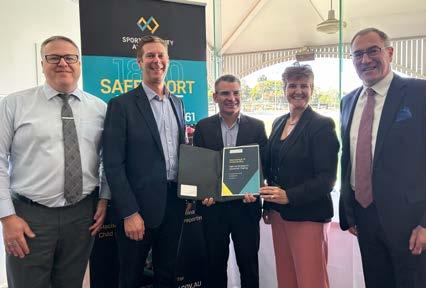


Joyce also examined the links to sporting activities and how the operation disrupted identified persons from impacting the fair and equitable playing field of sport and reduced the harm to the Queensland community.
The importance of providing culturally safe environments was illustrated through Tracey Thompson’s work at Iron Traks.
Thompson’s organisation utilises her lived experience to support women through unique team building activities, connection, empowerment and embedding resilience.
“Our Vision is to transform the lives of women and embed a culture of empowerment to address the imbalance of cultural and gender equity, recognising the value in their strength, agility, ambition and power that all
13 SPORT INTEGRITY MATTERS | ISSUE 13
While I can’t change what happened to me, I can help to improve education and prevent this from happening to someone else.
Sport Integrity Australia signed Memorandums of Understanding with all states and territories. Pictured (top to bottom) are representatives from Victoria Police, Tasmania Police, Northern Territory Police and Western Australia Police with CEO David Sharpe and General Manager–Operations, Susie Ball.
Sport Integrity Australia’s General Manager – Operations
Susie Ball was honoured at the conference dinner.

CEO David Sharpe recognised Susie’s efforts in bringing the law enforcement model to life through the signing of Memorandums of Understanding with all state and territories.
“Susie has worked in many areas of the Australian Federal Police,” David said. “If you know Susie, you know when she wants to get something done nothing stops her.”
Susie, an out-posted Australian Federal Police Commander, said her time at Sport Integrity Australia has been a highlight.
“The peak of my career has been the last two-and-a-half years − I stepped out of my comfort zone and I had a crack, and that’s the thing I have loved about this agency and opportunity. So thank you to everyone and thank you for this recognition,” she said.
“We have the Olympics coming in 2032 and I will stand back extremely proud of this agency and everything we have achieved.”
women possess,” she said. “My program lifts up women. It shows that by working together, we can achieve more.”
There was also a panel discussion featuring Douglas Stubbs (Sport Integrity Australia), Laura Armstrong (Sport and Recreation Victoria), Michelle Garton (Northern Territory Police) and the inaugural CEO of AusCycling, Marne Fechner. The panel discussed how to flag people of concern and prevent them from popping up in another sport and the issues from grassroots to elite (which are the same and current).
The final presentation of the conference featured representatives from Victoria Police, Sport Integrity Australia and the Australian Criminal Intelligence Commission.
The session combined the three agencies’ perspectives on the threats to sport from competition manipulation, often referred to as match-fixing.
Australia’s gross gambling turnover in 2022 was $257 billion, 74% of that gambling on gaming, 17% on racing, 6% on sports betting and 3% on lotteries. The presentation highlighted the increasing concern of illegal gambling and betting to the integrity of sport and provided insights on the approach to detecting and countering match manipulation at major sporting events, such as the recent FIFA World Cup and upcoming FIFA Women’s World Cup, which will be hosted by Australia and New Zealand.
$257 BILLION
Jason Whybrow, Sport Integrity Australia’s Director of Sports Wagering and Competition Manipulation, said global wagering on sport and its place in the broader gambling landscape is a rapidly evolving environment that is growing and challenging sport and law enforcement in new and unpredictable ways.
“Betting on sport through licensed providers allows some level of intelligence and support when suspicious activity occurs,” he said. “The challenge of a globally connected wagering and sometimes criminally connected market is that cooperation is often non-existent and supports criminals getting away without detection.”


One assessment of suspicious matches indicates rapid changes in the criminal approach to fixing that is adapting to different sports as the market responds to public interest. For example, the potential for corruption of sports responds to the growth in availability of vision to stream through many thousands of websites.

Gaming 74%
AUSTRALIA’S GROSS GAMBLING TURNOVER IN 2022 Racing 17% Sports betting 6% Lotteries 3%
14 SPORT INTEGRITY MATTERS | ISSUE 6
thank you Susie!
WE MUST CALL OUT RACISM: CEO
Sport Integrity Australia CEO David Sharpe has called for a united approach to combat the rising instances of racial abuse in Australian sport.
Speaking at the Threats to Sport Integrity conference, Sharpe said we all have a role to call out and protect the culture of Australian sport and to ensure that the sporting arena is a safe place for all.
“Every weekend we witness incredible achievements across Australian sports, from the winning professional teams to the joy produced by the six-year-old participating in a sporting event for the first time,” he said.
“However, on a weekly basis we witness cowards hiding behind a keyboard racially abusing our sporting heroes or people hiding in a sporting crowd yelling racial abuse while three rows deep.”
Sharpe urged sporting fans to call these people out – and draw a line in the sand on behaviour that is unacceptable.
“Fans need to call these people out, we all do. We all need to change the culture of sport by calling out these behaviours,” he said.
“When we hear it, we need to say, 'Mate, you can't say that.' I don't want to see our great champions walk away from sport because of this vile abuse.
“I don't want to see Australian children walk away from the opportunity to participate in sport because these cowards are not brave enough to show their face.”
Sport has a positive impact on Australian culture, he said, and is the fabric that draws us together.
“Let's make these cowards the minority,” Sharpe said. “Fans need to take control of their sports. They need to pledge to remove this from our sports.”
Sharpe said Sport Integrity Australia had implemented a range of policies, such as an anonymous reporting hotline, aimed at safeguarding athletes at all levels from racial abuse.
The hotline − 1800 161 361 − has been created for members to share their story about issues they have experienced in sport, which includes wider racial and cultural issues in sport.
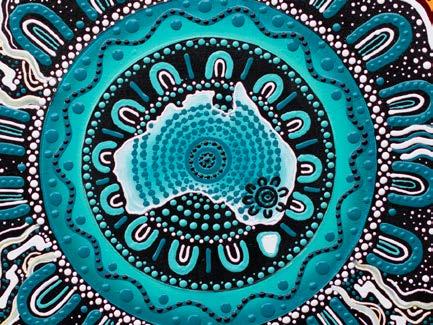
The hotline operates from 7am−7pm, 7 days a week, 365 days a year.
SAFETY IN SPORT DIVISION
All levels, all sports
There is no excuse for abuse in Australian sport
Expanded hotline capabilities
Safety and Culture Advisor
Anonymously report your concern
Safeguarding in Sport
Continuous Improvement Program
We’re here to listen and support
Need to talk?
Share your story.
Talk to one of our trusted team about issues you have experienced in sport. The Safe Sport hotline includes an anonymous reporting capability which covers wider racial and cultural issues for people who feel they have been discriminated against in their sport.
Call 1800 161 361 7am–7pm, 7 days a week, 365 days a year
When we hear it, we need to say, 'Mate, you can't say that.'
I don't want to see our great champions walk away from sport because of this vile abuse.
15 SPORT INTEGRITY MATTERS | ISSUE 13
SAFEGUARDING OUR SPORT
The latest episode of our podcast On Side looks at the issue of safeguarding participants of sport. It discusses the findings of the Australian Child Maltreatment Study and what it means for sport, and the work done as a result of Sport Integrity Australia’s review of the Western Australian Institute of Sport’s Women’s Artistic Gymnastics program. This is an edited extract.
The interview features:
Professor Daryl Higgins Director, Institute of Child Protection Studies, Australian Catholic University
 Kait McNamara Director, Child Safeguarding Department of Local Sport and Cultural Industries (Western Australia)
Emma Gardner A/g Director Safeguarding Sport Integrity Australia
Kait McNamara Director, Child Safeguarding Department of Local Sport and Cultural Industries (Western Australia)
Emma Gardner A/g Director Safeguarding Sport Integrity Australia


How do you define child maltreatment?
Daryl: Child maltreatment is a term that researchers and many people use to really talk about different forms of abuse and neglect. So, it’s when the treatment of children by parents or caregivers or others in positions of authority is not what it should be.
How prevalent is it in sport?
Daryl: We’ve not gone down to industry specific types but of course sport is just one example of what we would call an institutional context and often in those contexts we’re talking specifically about sexual abuse. In our study, we’re looking at every form of child abuse and neglect.
We know that many forms of abuse and neglect are more prevalent for women compared to men and … looked at changes over time, gender differences, age cohort differences and that’s really the power of a study as comprehensive as ours is.
You’d hope now you’ve laid the platform that there is going to be a positive response to your study.
Daryl: We’re already seeing that in terms of different sectors saying how valuable the data is to them, both in terms of prevention, knowing how extensive it is and therefore what are some of the drivers that we need to be addressing in our community, but also in terms of responses. We know now that one of the really significant drivers of the scourge that we have in Australia of mental ill health is childhood experiences of abuse and neglect.
Do you feel as though the time is right now to be absolutely specific on some of the areas that you’ve already identified?
Daryl: We’re just scratching the surface. We’ve got another 20 articles that we’re planning so lots of further analysis to be done. This is really just the beginning.
Kait, the Royal Commission resulted in 310 recommendations for Western Australia. There was also Sport Integrity Australia’s review into the Western Australian Institute of Sport’s Women’s Artistic Gymnastics program, so there are issues to deal with sports specifically aren’t there?
Kait: Indeed, I think the Royal Commission into Institutional Responses to Child Abuse very much showed us that there was no type of institution that sort of escaped this type of abuse and harm of children, that it was prevalent across the board. One of the Royal Commission volumes specifically looked at sport and recreation itself.

16 SPORT INTEGRITY MATTERS | ISSUE 13
Australian Child Maltreatment Study findings

5 types of maltreatment
Physical abuse
Sexual abuse
Emotional abuse
Neglect
Exposure to domestic violence
The prevalence of each type of child maltreatment
62% of Australians have experienced 1 or more types of maltreatment
Prevalence of abuse
32% physical abuse
28.5% sexual abuse
2 in 5 Australians have experienced multi-type maltreatment (2 or more types)
Mental health Impact
48% of all people who experienced child maltreatment have a mental disorder
Only 1 in 5 people who did not experience child maltreatment have a mental disorder
Sexual abuse and emotional abuse consistently produce the strongest associations with mental health disorders
• Girls experience substantially more child sexual abuse in almost all settings
• Institutions were the only setting where girls experience less child sexual abuse than boys.
Mental health outcomes and health risk behaviours
• Major depressive disorder
• Generalised anxiety disorder
• Post-traumatic stress disorder
• Alcohol use disorder
30.9% emotional abuse
Almost 1 in 4 have experienced 3−5 types of maltreatment (23.3%)
How do you deal with it? Are there other things that you can do to protect particularly young people?
Kait: There’s obviously a lot of things going on that stem from the Royal Commission that I think sporting organisations can look to in the first instance. And I think it’s also for them being just aware of who can support them if something does happen at their club, who do they need to contact in the police, who do they need to contact … We prevent them where we can, but if they do occur, how do we support that young person in a very, very critical moment because that can really shape how they then move forward from their journey.
Emma, just on the WAIS recommendations, what role did Sport Integrity Australia have then, and what role does it have now?
Emma: We conducted a cultural review of the WAIS program from 1987 til 2016, so a massive span. It was a cultural review. I believe for the majority, for the most part people feeling heard, people being believed and people understanding that we’re doing our best to ensure this
• Tobacco use
• Alcohol use (sub-clinical)
• Cannabis dependence
• Self harm
• Suicide attempts
8.9% neglect
39.6% exposure to domestic violence
Exposure to domestic violence is one of the 5 most common types of maltreatment
doesn’t happen again to the next generation of young athletes is key. Gymnastics isn’t an island, in 1987 not many sports had a child safeguarding policy.
In 2023, we’re still getting sports to adopt child safeguarding policy. For me, I guess the key difference for gymnastics and that extra duty of care is that you’ve got a sport where you’re elite and sub-elite athletes are children.
We know a lot more about brain development. We know about the impact of trauma on that developing brain and behaviours that were accepted in the past are not accepted anymore. Kait and the Department of Communities and Justice have been working with us at Sport Integrity Australia to really unpack "what is the intention behind some of these recommendations?". What do they mean and what does success look like? For example, setting up an independent complaint handling model, what is a reasonable timeframe and what does that entail so that we can ensure that we’ve got this cross-agency collaboration to really affect positive change for the children and young people at sport today.
SPORT INTEGRITY MATTERS | ISSUE 13 17
www.acms.au
What sort of safeguarding issues is Sport Integrity Australia looking at?
Emma: The key areas of abuse the Commission found, such as transporting children, overnight stays, in change rooms, are really still the same key increased risk areas that we’re seeing. It shows us that we’re on the money with our policy … we’re trying to eliminate grooming without increasing anxiety within the sport. By increasing that awareness and the understanding that if you create safe environments then you eliminate a lot of those risks.
Daryl, I’d imagine a lot of what has been said by Kait and Emma resonates with you. Some of the information, I guess, that you’ve received through your study?
Daryl: I’m really glad Emma that you used the word grooming and the reason for me saying that is that I think in terms of prevention of child sexual abuse, we are often not explicit about what it is that we’re trying to achieve. And so when we’re really clear about what are the things, what are the conditions that can lead to, clearly grooming is, you know, the top one. And so we need to be explicit about that. We need to say it and the organisations that we’re working with need to understand, first of all, what grooming is and what it might look like because of course it can look very similar to trusting relationships. So that’s really complex for organisations, particularly sporting organisations, to get across.
We know that adults who are experiencing mental ill health and health risk behaviours like addictions and self-harming behaviours that they are much more likely to have experienced multiple types of maltreatment rather than a single type. So hopefully this data can really be used by a whole range of different sectors, including sport, not just to
renew their efforts around safeguarding to protect children from sexual abuse within their code, but more importantly to keep children safe no matter where the harm comes from and no matter what type of harm.

Emma: Daryl, that’s music to my ears. We need to understand that holistic approach and understanding the complex issues around child abuse and domestic violence, certainly there’s normally multiple concerns and different types of abuse going on. I think sports' understanding their duty of care, sports could be the one safe place that a child has and they have such a strong and important role to play in terms of recognising indicators of abuse, particularly neglect. So we need to educate parents on how to find a safe club and how to ask the right questions to ensure that their children are kept safe.
Kait: I think, for me, one of the challenges in all of this is the sports sector itself in the sense that it is often run by volunteers, their parents. It’s a really challenging space I think because there is a high turnover at the club level, who’s working there. We need to bring it together to actually tailor something for sport because they’ve got some slightly different considerations.
18 SPORT INTEGRITY MATTERS | ISSUE 13
... we need to educate parents on how to find a safe club and how to ask the right questions to ensure that their children are kept safe.
Emma: You touched on the turnover. The risk isn’t going to go anywhere. There’s always going to be new children, and there’s always going be people that are drawn to sports with nefarious intent. So understanding that continual improvement process.
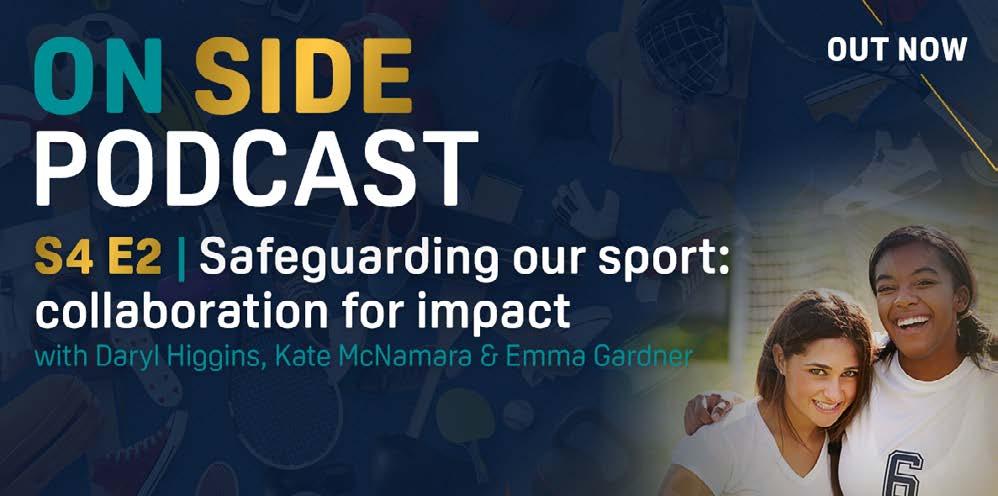
Just on grooming. The online environment is a real issue at the moment and I guess navigating something we really haven’t experienced a lot of before, but now suddenly it is coming.

Daryl: With our younger sample in the Australian Child Maltreatment Study, that was one of the key locations if you like or context of sexual harm was the online environment. So certainly things have changed from 20−30 years ago that we have to constantly be rethinking what are the risks that we need to be engaging with and, of course, sport is not immune from that. There’s a lot of electronic communication that goes on, whether it be between team leaders and participants, between the young people themselves, friendship networks, engaging with each other. But one of the things that I’m really kind of excited about is the possibility for sports … in terms of the workforce, if you like, of many sporting clubs being volunteers and being parents. The thing that I’m hopeful about is that effectively we have a training ground for building the capacity of parents because as they’re going through the process of creating child safe organisations, they’re learning skills that they can actually translate into their home environment … So I’m really positive about the role that the sports sector can play in building that parenting capacity and using evidence-based parenting practices.
Emma: It’s all very well having your governance structures in place and great policies but if people don’t know what their rights are and what their responsibilities are, it’s ineffective, no one’s going to report. So we need to educate parents on how to find a safe club and how to ask the right questions to ensure that their children are kept safe.
Kait: Information also needs to come from the clubs themselves. There can be that power imbalance between a coach and a family, you see it in other sectors as well.
We saw it in religious institutions. I think making sure that the institutes or the clubs themselves are also empowering parents, to let them ask for feedback, to make sure that kids are involved in decision making. It levels out that power imbalance a little bit.
Emma: Engaging children, young people in decisions that affect them and having meaningful consultation and closing the loop and co-designing and co-branding resources to them.
Daryl: I really encourage you all to keep going down that path because we learn very different things when we bother to stop and ask children about things like what makes them feel safe, what makes them feel uncomfortable, things that adults don’t necessarily feel the same way about and to then really respect that and, as you say, to have that flow through to decision making … if we don’t create safe spaces for those conversations around other things, so things like bullying and harassment or where they feel uncomfortable about their environment, etc, unless we take those things seriously, they’re just not going to tell us about those big things that we want them to be talking about.
SPORT INTEGRITY MATTERS | ISSUE 13 19
... we learn very different things when we bother to stop and ask children about things like what makes them feel safe, what makes them feel uncomfortable ...
SAFEGUARDING AT ALL LEVELS
Sport Integrity Australia’s new Continuous Improvement Program aims to strengthen sporting organisations’ safeguarding practices, create safer environments, drive better outcomes for children and members and minimise the risk of harm to all who participate in sport.
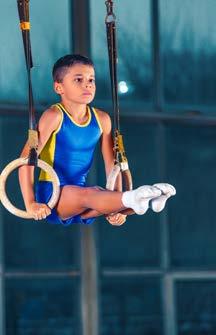
Sport Integrity Australia has developed the Safeguarding in Sport Continuous Improvement Program because all Australians should feel safe to participate in sport, regardless of where they play or the level they play.
The program will provide sports with education, training and ongoing support to ensure they are equipped to provide safe and inclusive environments for all members, including children.
The Safeguarding in Sport Continuous Improvement Program is a joint initiative with the National Office for Child Safety supported by a three-year, $4.7 million budget measure to enhance child safety in sport as part of the Commonwealth Action Plan to Prevent and Respond to Child Sexual Abuse (2021–2030).
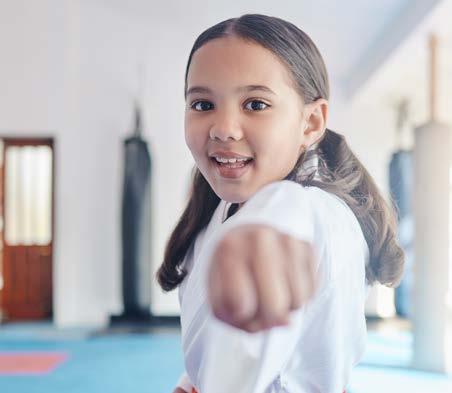

Participation in the program is voluntary and open to any National Sporting Organisations (NSO) and National Sporting Organisations for People with Disability (NSOD) currently recognised by the Australian Sports Commission.
The objectives of the program are to:
• build the capacity and capability of Australian sporting organisations to keep children and members safe
• lead a cultural shift which prioritises the safety of children and members, by empowering every level of sport
• enhance organisational capability to respond to child abuse risk
• bolster community confidence that sports are safe for children and members

• enable sports to demonstrate their commitment to child safeguarding and member protection.
The program provides national leadership, best practice guidance and resource support. It entails a phased, collaborative approach to guide sports in maturing their safeguarding capabilities and to help lead a cultural shift across their sport which prioritises the safety of children and members.
By working in partnership with NSOs and NSODs, Sport Integrity Australia will conduct an audit to evaluate the operational effectiveness of their child safeguarding and member protection policies and practices. The audit will help determine the maturity of these practices and together, we will then develop a tailored Action Plan to strengthen child safeguarding and member protection practices and processes through a staged approach over several years.
The agency recognises that all sports are different, with unique governance models and at varying stages of their safeguarding journey. This has been factored into the design of the program, enabling flexibility to contextualise and adjust based on the unique environment of each and every sport.
Sport Integrity Australia will work with sports and assist them every step of the way. A dedicated safeguarding team member will be assigned to each sport and the agency will supply extensive resources to support sports organisations.
Leadership, Governance and Culture
Safeguarding in Sport Continuous Improvement Program
Training
Education
Risk Management
Policies and Procedures
Human Resource Management
Complaints, Discipline and Disputes Practices and Processes
EMBEDDING
20 SPORT INTEGRITY MATTERS | ISSUE 13
Children, Families and the
and
System, Policy and Process Review and Improvement Engagement with
Community Equity and Inclusion
HOW DOES THE PROGRAM WORK?
The program consists of three phases (Recognise, Achieve and Embed). Each phase takes a collaborative approach to implementation of child safeguarding and member protection requirements across nine core themes – all of which are underpinned by the National Principles for Child Safe Organisations and best practice member protection processes.
Phases
Each phase of the program represents a new stage of maturity that builds upon the last. There are differing theme requirements for each phase, to take into consideration the resources and journey required for sports to successfully implement child safeguarding and member protection.
Audit Questionnaire As part of the program, Sport Integrity Australia will conduct an Audit Questionnaire in partnership with the NSO/ NSOD, to map their progress against child safeguarding requirements (aligned to the National Principles) and best practice member protection requirements.
The audit will help determine the maturity of these practices in the sport and together, Sport Integrity Australia and the NSO/NSOD will then develop a tailored Action Plan to mature child safeguarding and member protection practices and processes over several years.
Action Plans
The tailored Action Plans will include practical steps to building safer environments for children and other members. Sport Integrity Australia will work with each sport to help implement each Action Plan, and move to the next, by providing support, guidance and resources.
PHASE 2 ACHIEVE PHASE
Involves the NSO/NSOD in collaboration with each SSO
PHASE 3 EMBED PHASE
Involves the NSO/NSOD in collaboration with each SSO on behalf of affiliated bodies
The Recognise Phase is focused on taking a risk-based and targeted approach, where the NSO and NSOD will ensure child safeguarding and member protection fundamentals are embedded into key policies and culture.
Audit Questionnaire
To be completed by Sport Integrity Australia and the NSO/NSOD of the sport.
The Achieve Phase is focused on embedding and implementing elements of the sport’s Child Safeguarding and Member Protection Policy into practice. For this reason, SSOs are introduced into the program during this phase and assigned practical actions to further develop child safeguarding and member protection across the sport.


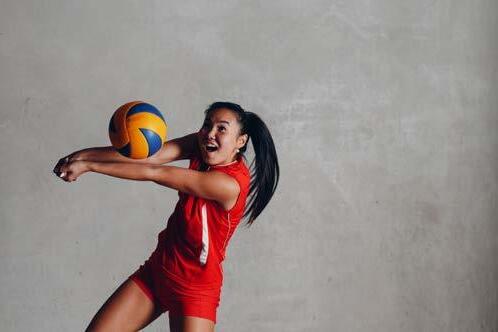
Audit Questionnaire
To be completed by Sport Integrity Australia and the NSO/NSOD in collaboration with each SSO of the sport.
The Embed Phase is focused on driving cultural change through the NSO/NSOD, SSOs and the community affiliated bodies (associations/clubs). Community affiliated bodies (associations/clubs) are introduced and involved in this phase.
Audit Questionnaire

To be completed by Sport Integrity Australia and the NSO/NSOD in collaboration with each SSO on behalf of affiliated bodies (associations/ clubs) of the sport.
STEP 1
Action Plan Development and implementation.
Action Plan Development and implementation.
HOW TO SIGN UP TO THE PROGRAM

To officially sign up to the program, a NSO/NSOD CEO or Board is required to complete an official ‘sign up acknowledgement form’. This process ensures the CEO or Board makes a commitment on behalf of the sporting organisation to all its members, whatever their age. Contact safeguarding@sportintegrity.gov.au for more information.
Action Plan
Involves the NSO/NSOD
PHASE 1 RECOGNISE PHASE
Completion of Action Plan Completion of Action Plan
SPORT INTEGRITY MATTERS | ISSUE 13 21


When it comes to kids’ sport, ask the right questions. How will your club keep my child safe? Does the club have a Child Safeguarding Policy? Does the club haveCodeswritten of Conduct? Start to Talk is a national campaign aimed at promoting child safety by encouraging parents and sporting organisations to discuss how to create a child safe environment. Read, download and discuss Child Safe Sport resources developed in partnership with Sport Integrity Australia. Don’t take child safety in your sport for granted. www.playbytherules.net.au/start-to-talk-campaign
CLUBS UNDER PRESSURE
Community
Rising costs and decreases in revenue have led to almost one in five community sporting clubs considering shutting their doors in the past 12 months, according to an Australian Sport Foundation (ASF) report.
The Clubs Under Pressure report says smaller clubs were feeling the greatest strain with as many as one in four considering closing.
Running costs have risen 68%, averaging $20,529, due to rises in insurance, maintenance, utilities, affiliation fees, digital operating expenses, rent and salaries.
The report said challenging economic conditions placed “additional strain on community sporting clubs, already struggling with running costs, participation numbers and volunteers after COVID-19 and extreme weather events”.
Encouragingly, almost 40% of clubs surveyed experienced an increase in participation, with 33% seeing an increase in female participation. Those surveyed said these increases were due to club promotions, new programs targeting new members, support by volunteers and the community, increased popularity of particular sporting codes and population growth in the area.
Unfortunately, 27% of clubs have reported a decline in registration among 15–19-year-olds, continuing a trend with concerns for the health and wellbeing of this age set and challenges for community sport in this age range generally.
The Australian Sports Foundation is a national non-profit sports fundraising organisation that supports Australian sport. The Clubs Under Pressure report follows similar reports from ASF in 2020 and 2021 which both focused on the impact of COVID-19 on sport.


For more information and a full copy of their findings, including some club participation initiatives from clubs who are continuing to grow in tough times, head to www.asf.org.au

MAIN FINDINGS
1. Almost 1 in 4 small clubs are considering closing their doors.
2. Rising costs impacting participation and pushing many clubs toward insolvency.
3. Teenagers are continuing to disengage with community sport.
4. Less volunteers and more administration.
5. Clubs want facilities, participation and volunteer support ahead of 2032.
sport plays a vital role in the Australian way of life but a report last month suggests that many clubs may be close to shutting their doors.
Australian Sport Foundation
THE WORRYING TREND OF STEROID USE IN YOUNG ADULTS

In a world where a person’s sense of self-worth is becoming more image based, reports are finding that teens and young adults are resorting to steroids and other performance and image enhancing drugs (PIEDs) to change their physique.
According to the Australian National Drug Strategy Household Survey of 2019, non-medical anabolic steroid use almost tripled in the 18 years between 2001 and 2019. These prescription-only drugs, which are easily bought online (although illegal to sell in Australia) could well become an ongoing health problem for our young people.
“This goes beyond anti-doping and could well pose a significant health risk to consumers,” said Dr Laura Lallenec, Sport Integrity Australia’s Medical Advisor.
The use of anabolic agents in Australia is illegal without a prescription, has anti-doping implications for athletes and poses significant health risks. Anabolic agents are banned at all times in sport.
Anabolic agents refer to steroids as well as Selective Androgen Receptor Modulators (SARMs) with both coming under the category of PIEDs.
“SARMs are a very serious growing threat to athletes because they are now the most commonly detected PIED in Australia with 12 athletes testing positive last year alone in sports ranging from rugby, football, wrestling, lifesaving and weightlifting,” Dr Lallenec said.
“Most anabolic agent consumers are males between 20−24 years of age who misuse these substances to build muscle for aesthetic or performance reasons.
“There is increasing concern regarding a rise in body dissatisfaction in young males particularly around masculinity. Individuals develop an unhealthy obsession with muscle growth and definition and are at risk of over-exercising as well as utilising medications including anabolic agents to achieve their goals.”
She said new research by the University of Queensland, the Australian Sports Drug Testing Laboratory and Sport Integrity Australia has used wastewater analysis to assess the spread of SARMS use in Australia. "SARMs use was found to be widespread across the Australian community – turning up in virtually every population tested.
“This is a very worrying trend.”
Anabolic agents work by mimicking the properties of naturally occurring hormones, in particular testosterone.
From a doping perspective, athletes can be drawn to anabolic agents in the hope of increased strength, endurance or injury recovery, without consideration of the consequences of getting caught, of the health impacts or the fact that steroid use can actually increase your risk of tendon rupture or other injury. A positive anti-doping test for an anabolic agent will almost certainly result in a ban from sport, with the standard sanction a four-year ban from participating in any sport.
“Misuse of anabolic agents is dangerous to an athlete’s health and should be avoided by athletes of all ages and levels,” Dr Lallenec said.
She suggested that the emphasis must be on educating athletes as well as their support personnel. Education campaigns should focus on highlighting the health risks associated with misuse as well as the specific anti-doping risk for athletes.
“Where possible, sporting organisations should consider educating young people in the school and grassroots setting”, Dr Lallenec said. “The development and implementation of evidence-based prevention initiatives and resources on PIEDs at the grassroots level (e.g. high school sport programs) can have a significant impact on preventing PIED use and to safeguard sport for the future and Sport Integrity Australia can assist with this.”
Sport Integrity Australia’s e-learning platform has a number of courses to assist athletes and support personnel gain a better understanding in this area.
Athletes that are prescribed anabolic agents for treatment of a legitimate medical condition may be eligible for a Therapeutic Use Exemption (TUE) and should visit the Sport Integrity Australia website for more information.
For more information about the world first wastewater analysis refer to the March 2023 issue of Sport Integrity Matters magazine (page 12).
24 SPORT INTEGRITY MATTERS | ISSUE 13 SCIENCE SCIENCE IT'S ALL ABOUT THE SCIENCE SCIENCE IT'S ALL SPORT INTEGRITY MATTERS | ISSUE 13
WINTER SUPPLEMENTS WARNING
Supplements are not only protein powder, but they can also include vitamin tablets or herbal products. Supplements are not regulated in the same way as medicines and may contain substances not listed on the label.

Although pure herbal ingredients appear benign when they are processed to manufacture supplements, their safety cannot be guaranteed.
Supplements are at greater risk from cross-contamination from other substances manufactured on the same equipment. Because of this risk, Sport Integrity Australia’s advice is that no supplement is 100% safe to use and athletes should not risk their careers by taking a supplement.
A survey of Australian supplements in 2016 discovered that 1 of every 5 supplements tested contained a prohibited substance not listed on the label. Under the World AntiDoping Code’s strict liability principle, athletes are ultimately responsible for any substance found in their body, regardless of how it got there. As such, Sport Integrity Australia cautions athletes to carefully consider their use of supplements.
If supplements are deemed necessary, athletes must ensure their products are batch-tested by using the Sport Integrity app (found on Google Play or the App Store).
It is also important for athletes competing in sports governed by a World Anti-Doping Code compliant anti-doping policy to be aware that they can’t just take any drug or medication. Some common cold and flu tablets and decongestant medications contain pseudoephedrine, which is banned in-competition, even asthma medication has restrictions on the dose that may be taken during competition (Status of asthma medication in sport | Sport Integrity Australia).
“Not all cold and flu medications are the same,” Chief Science Officer Dr Naomi Speers said. “Some do contain prohibited substances. It is important for athletes to be careful when checking their medications. Common ingredients such as phenylephrine and pseudoephedrine, sound similar however one is prohibited and the other not.”
All athletes are advised to check their medications on GlobalDRO to see if there are any restrictions in taking their medication in- or out-of-competition. If there are any concerns athletes are encouraged to talk to their GP about finding a permitted alternative.

SPORT INTEGRITY MATTERS | ISSUE 13 25 ABOUT THE SCIENCE SCIENCE IT'S ALL ABOUT THE SCIENCE SCIENCE
CYBER ALERT
The Cyber Safety and Security in Sport eLearning course is available now!
Sport may be a national passion for millions of Australians, but that does not protect sporting organisations of any size from the mounting threat posed by cyberattacks and cybercriminals searching for easy wins.
Just as technologies are creating possibilities for sports, they also create opportunities for criminals to commit new crimes and to carry out old crimes in new ways.
The volume, sophistication and impact of cybercrime continues to grow and poses a serious and evolving threat to sporting organisations. In fact, a cyber breach happens every seven minutes, with the average cost of a cyber security breach for a small business $39,000.
Partnering with the Australian Signals Directorate’s Australian Cyber Security Centre (ACSC) and the eSafety Commissioner, Sport Integrity Australia has created a Cyber Safety and Security in Sport course to help sport administrators understand the potential cyber security threats their sporting organisations might face.
Designed to be completed by anyone working in a sporting organisation, the course is the first of its kind containing cyber security lessons specifically tailored to sporting environments for use by National Sporting Organisations, National Sporting Organisations for People with Disability, athletes, support personnel and clubs at all levels.
The Cyber Safety and Security in Sport course will help users:
• Identify the cyber security risks facing their organisation, and the impact of getting it wrong.



• Identify what to do if they are hacked.
• Protect their accounts and devices.
• Understand what to do if someone in their sport suffers online abuse.
Sport Integrity Australia Director of Education Alexis Cooper says the course can help sporting organisations become more resilient to cyberattacks and provide them with an immediate ability to upgrade their cyber protection to protect their sport and their members.
“Cyber security for sporting organisations is more relevant now than ever before,” Ms Cooper says.
“From grassroots clubs holding personal data through to national organisations hosting and participating in major international sporting events, inadequate cyber security can cripple sporting organisations.
“This course is the first of its kind, containing cyber security lessons specifically tailored to sporting environments so that they can immediately apply what they’ve learnt to their own clubs.”
The impact of cybercrime on a sporting organisation can include loss, corruption or theft of data, destruction of systems, theft (e.g. financial or identity), disruption of events, inappropriate access to surveillance materials, reputational damage and cyber abuse of athletes and participants.
The course utilises a range of case studies from sporting organisations around the world to give relevance to the cyber safety content.
“There are examples from across the sporting landscape from the English Premier League to international athletics meets all the way down to examples from community sporting clubs in Australia, to help educate sporting organisations on the scenarios they could face.”
This course is the first of its kind, containing cyber security lessons specifically tailored to sporting environments so that they can immediately apply what they’ve learnt to their own clubs ...
26 SPORT INTEGRITY MATTERS | ISSUE 13
... the course also highlights the much-needed inclusion of education on online abuse in sport and integrity threats, such as match-fixing approaches.
eSafety research has found:
• 75% of adults have had a negative online experience.
• 45% of children have been treated in a hurtful or nasty way online.
• 1 in 6 adults had done something negative online to others.
Sport, too, is not immune. Many sporting organisations and events have reported on the prevalence of online abuse towards elite athletes. To understand the risk of online abuse in your sport, Ms Cooper says it’s good to have an understanding of just how broad your online environment is.
The course also highlights the much-needed inclusion of education on online abuse in sport and integrity threats, such as match-fixing approaches, she adds.
“Sadly, there are many negative experiences people endure online that are connected to their involvement in sport. To combat this, we have included information for sporting organisations on how to respond to situations involving online abuse.
“Social media direct messaging has also given match-fixers an easy avenue to approach athletes and administrators, so it’s important they be aware of how these approaches can occur and what to do if that happens.”
eSafety Commissioner Julie Inman Grant said online abuse can take an incalculable mental health toll on participants, especially when clubs find themselves facing a torrent of online abuse by disappointed fans.
“Some of the abuse we’re seeing is personal, racist, misogynistic, violent, even extending to death threats. This type of abuse is deeply harmful and can make participants feel unsafe, undermining their enjoyment and love of the game,” Ms Inman Grant said.
“We want all Australians to know that eSafety is here as an online safety net and we have powers to remove serious online abuse.
“With the potential to help millions of sport-loving Australians, this online safety learning module will equip individual clubs with the knowledge and skills to support participants being abused online. This includes how to report serious abuse to eSafety.gov.au. I congratulate Sport Integrity Australia on its leadership and for taking a systemic approach to online safety education.”
As with most threats, the best response is to be prepared in the first place.
The Cyber Safety and Security in Sport eLearning course takes 45 minutes to complete and is available now on Sport Integrity Australia’s eLearning platform.

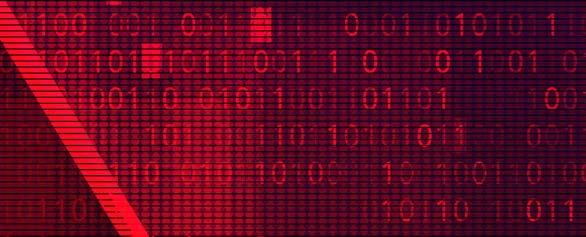
https://elearning.sportintegrity.gov.au
GLOBAL ANTI-DOPING EDUCATORS SUMMIT
Sport Integrity Australia's Assistant Director of Education, Gavin Whitehouse, attended the Global Anti-Doping Educators Summit where he and his international peers shared knowledge and identified areas for improvement. Gavin shares his Summit experience and why this type of collaboration is important for sport globally.
Last month I was fortunate to spend a few days in the picturesque Rocky Mountains of Colorado Springs with leading anti-doping education practitioners from around the world, with representatives from Austria, Australia, Canada, Denmark, Germany, Japan, New Zealand, Switzerland, UK, USA and WADA.
As part of the summit, I was asked to present how Sport Integrity Australia’s Education team works with our colleagues in the Anti-Doping Testing and Intelligence teams to educate athletes well before they are selected for testing. Other topics covered during the summit included: Sanctioned athlete education and wellbeing; training and development of education presenters; innovative education strategies and technologies; improved program evaluation; mutual recognition of programs and National Anti-Doping Organisation (NADO) education plans. I learnt a lot from the other educators and have come home with countless ideas to improve our education offerings, such as strategies for upskilling and expanding our athlete educator network, investigating new data techniques for improving efficiency of compliance checks and innovative approaches to athlete wellbeing management in anti-doping processes.
We covered many topics, resulting in the formation of working groups to progress work in targeted areas. Due to the talent and expertise within our agency (identified at last year’s WADA Global Education Conference) my international colleagues suggested that some of these groups could be led by Sport Integrity Australia personnel, which is a huge compliment for Australia, demonstrating once again how fortunate we are to have such talented, creative and technical minds in our midst. It’s great to know we are the first to be thought of to push global anti-doping education strategies forward.
In many ways, the summit confirmed that NADO education teams are dealing with the same challenges and by working through them together we can share our innovation and drive knowledge forward through sport globally. For me, personally, it showed that we’re doing a terrific job in Australia, but there is always room to grow and push ourselves to be even more creative in this space.
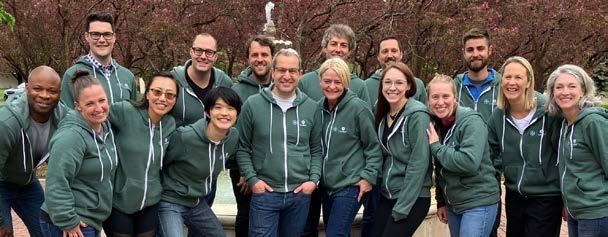
SPORT INTEGRITY MATTERS | ISSUE 13 27
Gavin
GAMBLING: A GLOBAL ISSUE FOR SPORT INTEGRITY
Gambling on sport is increasing both nationally and internationally with sports wagering and competition manipulation considered an emerging risk to the integrity of sport.
We chat to Jason Whybrow, the Director of Sports Wagering and Competition Manipulation at Sport Integrity Australia about the concerns, the level of sport impacted, trends and the importance of education.
Gambling on sport appears to be increasing in Australia. What are the concerns surrounding this from a sport integrity perspective?
Betting on sport is one of the faster growing categories of gambling in Australia.
Sport Integrity Australia is focused on the impact that corrupt gambling might have on the fairness and safety of the game. The role we play is to assist people understand the threats to sport integrity and help them to defend against them.
We have a strong focus on education, and we bring all of our knowledge of betting markets and the threats of criminal infiltration into our education products.
Is this a global issue or unique to Australia?
We are very conscious that betting and match manipulation are global issues for sports to grapple with. People overseas are betting on our sport here and we do not have regular access to that activity. The internet has enabled all sorts of eCommerce, of which betting is one of them, which makes it hard to track. The evolution of crypto currencies make tracking even harder.


In your experience, what levels of sport are being impacted by gambling?
We’re seeing the impacts down to quite low levels, but the primary criminal influences come from where the greatest gains can be made and that means the top few levels of every sport. The more betting that occurs, the greater the pools of money for people to attempt to corrupt.
Betting on lower-level sports certainly can be affected, but corruption at those levels tends to be less sophisticated or easily detected by unusual betting market behaviour. Are there particular trends or issues of concern?
Trends and issues of concern include the rapid growth of illegal betting markets and the information that feeds those markets.
The ability to view sports online can be one of the key drivers on which sports are bet on and at what level, because of visibility of the sport and the growing technology that allows it.
28 SPORT INTEGRITY MATTERS | ISSUE 13
Sport Integrity Australia is focused on the impact that corrupt gambling might have on the fairness and safety of the game. The role we play is to assist people understand the threats to sport integrity and help them to defend against them.
While the increased streaming has enormous benefits for sport for growing the audience, it comes with an associated amount of risk. While the risk might not be huge at the lower levels, it’s not negligible either.
Australia’s streaming capabilities and time zone makes us an attractive sports zone for many international markets, with a high percentage of games being streamed compared to some of our international counterparts.
With social media so prevalent allowing for direct lines of communication to athletes, does this increase concerns in this space?
Athletes are more accessible than ever before at all levels of sport, which can create great promotion for them and their brand, with increased levels of support coming from multiple areas, however it also brings with it a level of risk.
Athletes need to be educated so they can be wary of unsolicited contacts to determine whether it’s grooming for inside information or potential competition manipulation, compared to legitimate support from fans.

Of course their health and wellbeing is paramount with online abuse increasing and we’re working in partnership with the Office of the eSafety Commissioner on training and support in this space.
How can Sport Integrity Australia assist with the gambling threat to sport integrity?
Sport Integrity Australia can help with environmental awareness issues to assist with making decisions within sports based on the background on the global betting environment.
We’ll continue to check the impact gambling might have on safe fair sport and help Australian sports defend against them.
GLOBAL EXPERTISE AT TUE SYMPOSIUM
This year’s World Anti-Doping Agency (WADA) Therapeutic Use Exemption (TUE) Symposium was held in Incheon, Korea from 31 May to 2 June. The Symposium allows international anti-doping and medical professionals to share ideas, discuss the latest findings, chat about challenges and work together in the fight against doping for fair and safe sport.
The 2023 theme was “Balancing Medical Care with Fair Play” with WADA President Witold Bańka commending the global commitment to provide a level playing field while focusing on athlete health.
“Active participation and the critical arguments and discussions that take place among delegates during the Symposium are invaluable,” Banka said. “Through continued collaboration and by embracing the diversity of the anti-doping community, we can continue to raise the game for athletes around the world.”
Kim Reynolds, our Australian Sports Drug Medical Advisory Committee (ASDMAC) Officer represented Sport Integrity Australia at the event with Dr Susan White, ASDMAC Chair and Chair of the WADA TUE Expert Group who moderated several sessions. Dr Larissa Trease delivered a presentation on the Risk Management of Supplements, with Dr David Humphries presenting on Off Label Stimulants and Dr David Handelsman on infertility and clomiphene.
“One of the key objectives of the Symposium is to ensure processes are in place for athletes with legitimate medical conditions to participate in sport despite their need for medicines or treatments that might be otherwise prohibited,”
Dr Naomi Speers, Chief Science Officer explained.
“The health of athletes is foremost and Symposiums such as this allows experts in the field to ensure fairness is maintained around the world regardless of their sport, geographical location or medical situation.”
Topics at this year’s event included:
• Balancing medical care with fair play
• The Prohibited List
• Practical tips for living in a world of supplements
• Challenging medical cases
• Legal issues
• Challenges for TUE Committee Physicians

• Glucocorticoids
• The athlete’s perspective
Reynolds took the opportunity to meet with several National Anti-Doping Organisations prior to the Symposium to discuss challenges and share knowledge. Australia will continue to play an important role through our collaborative approaches and expertise in the TUE space.
SPORT INTEGRITY MATTERS | ISSUE 13 29
SNAPSHOT OF GLOBAL ISSUES
ANTI-DOPING
ANTI-DOPING ICE SKATING RUSSIA
The Court of Arbitration for Sport will hear appeals from the World Anti-Doping Agency, Russian Anti-Doping Agency and International Skating Union against the sanctions imposed on figure skater Kamila Valieva "simultaneously". They are appealing a RUSADA Disciplinary Committee ruling in January that Valieva was not to blame for her positive test and only disqualified her results at the Russian Championships.
TENNIS ROMANIA
Former world No.1 Simona Halep has been charged with a second breach of anti-doping rules, the International Tennis Integrity Agency have announced. Halep had been provisionally suspended since October 2022 for testing positive for the banned substance roxadustat, which stimulates the production of red blood cells, at the US Open last year. The ITIA said Halep has been further charged “relating to irregularities in her Athlete Biological Passport”.
ATHLETICS KENYA
Kenyan distance runner Rhonex Kipruto, who won a bronze medal in the 10,000m at the 2019 world championships and holds the world record at the distance in a road race, has been suspended for suspected doping. The Athletics Integrity Unit announced Kipruto has been notified of a charge relating to irregularities in his Athlete Biological Passport.
TRIATHLON UNITED STATES
American triathlete Collin Chartier tested positive for EPO from an out-of-competition test in February. Chartier has since admitted to the use of the banned substance and received a three-year ban. Chartier said he had “lost my way in the sport” due to “intense pressure and expectations to win the biggest races in 2024”.
MULTIPLE RUSSIA
More than 200 Russian athletes have been sanctioned by 17 anti-doping organisations with an additional 73 charged, following the "Operation LIMS" investigation into Moscow's anti-doping laboratory. The suspensions were the result of data and samples retrieved by WADA's Intelligence and Investigations team into the Moscow Laboratory Information Management System.
ATHLETICS BOTSWANA

The Athletics Integrity Unit has banned Botswana's men's 800m Olympic silver medallist Nijel Amos for three years after he tested positive for a banned metabolite of GW1516. Amos’ ban was reduced from four years to three because of an "early admission and acceptance of sanction".
ATHLETICS MOROCCO
Moroccan distance runner Samir Jouaher, who ran a personal best 2 hours 8min 42sec to win the Riyadh Marathon in February, has been provisionally suspended from April 6. This relates to an alleged presence or use of prohibited bloodbooster erythropoietin (EPO) or CERA, an EPO variant.
1 2 3 4 7 6 5
INTEGRITY 30 SPORT INTEGRITY MATTERS | ISSUE 13 1 3 4 7 8 12 13 17 11 18 14 16 5 9 6 20 2 15 10 19
SAFEGUARDING MATCH-FIXING/GAMBLING GENERAL SPORTS
WEIGHTLIFTING UKRAINE
Ukraine has had a third weightlifting doping violation since the end of the Tokyo Olympics and faces expulsion from Paris 2024. Alina Marushchak, the 2021 world and European champion at 81 kilograms, tested positive out-ofcompetition in March for the diuretic hydrochlorothiazide. She is the third Ukrainian since October to test positive for a banned substance after Ruslan Kozhakin and Bohdan Taranenko both tested positive for trimetazidine, a hormone and metabolic modulator.
SWIMMING BAHAMAS
Swimmer Joanna Evans will appeal to the Court of Arbitration a decision by the FINA Doping Panel to ban her from the sport for two years after she tested positive for Clostebol. Evans tested positive in an out-of-competition test in December 2021, shortly after she finished competing in the third season of the International Swimming League.
GENERAL SPORT INTEGRITY
ATHLETICS UK
A former England Athletics director has been banned from holding such a role on the sport’s national governing body for three years after suggesting that black athletes are good runners “because they have to get away from their burglaries”. Julian Starkey, who was previously also the chair of Bracknell Athletics Club and a licensed coach, was accused of making the comment at a function last year.
RUSADA RUSSIA
The World Anti-Doping Agency has ruled that the Russian Anti-Doping Agency remains non-compliant with the World Anti-Doping Code in its latest inspection of the body. RUSADA claimed that it operated in full compliance with the Code as it aims to be accepted by WADA once again but the latter has dismissed the attempt.
MATCH-FIXING/GAMBLING GRIDIRON UNITED STATES
Three NFL players were suspended indefinitely for betting on NFL games in the 2022 season, while two other players, including the 12th overall draft pick a year ago, received six-game suspensions for betting on non-NFL games at a league facility. Detroit Lions wide receiver Quintez Cephus, Lions safety C.J. Moore and Washington Commanders defensive end Shaka Toney are sidelined for the entire 2023 season.
FOOTBALL BRAZIL
Brazil's lower house of Congress has opened a probe into a match-fixing scandal that has rocked the sport in the South American nation. It is the third investigation into evidence of wrongdoing by players who allegedly made sure to get bookings and gave away penalties in exchange for bribes. The lead investigator said he has uncovered potential evidence of wrongdoing by players in other countries.
ATHLETICS ALBANIA
The president and general secretary of the Albanian Athletics Federation have copped lengthy bans after the Athletics Integrity Unit charged them with
manipulating a competition result to help long jumper Izmir Smajlaj qualify for the Tokyo Olympics. When the AIU asked for evidence of the jump and of the equipment to ratify the result, the Albanian federation allegedly sent back a staged photo. President Gjergj Ruli's ban expires in April 2028, while General Secretary Nikolin Dioni’s ban ends in December 2026. Smajlaj was cleared of being part of the conspiracy.
FOOTBALL UK

Brentford striker Ivan Toney has been banned from football for eight months after he accepted breaking Football Association betting rules. Toney was fined £50,000 and warned about his future conduct for 232 breaches of the FA's betting rules.
FOOTBALL BELARUS
Belarusian champions Shakhtyor
Soligorsk have been found guilty of match-fixing and stripped of the Premier League title they won last season. The Football Federation of Belarus said Shakhtyor was also deducted 30 points this season and 20 next season after it was found that club officials organised match-fixing and offered illegal financial incentives to other teams in the league.
SAFEGUARDING NETBALL AUSTRALIA
Children volunteering as umpires at community-level netball games on the Sunshine Coast are being subjected to abuse from players, parents, and even coaches. The Sunshine Coast Netball Association has emailed parents, players and clubs asking them to stop yelling, abusing, swearing at, and in some cases going onto the court to physically approach young umpires during games.
MULTIPLE CANADA
Elite athletes appeared before a House of Commons committee to accuse the federal government of doing nothing in response to abuse in sports and to demand a national public inquiry. The athletes told MPs about the physical and mental abuse they endured at the hands of coaches and other officials. They said that abuse is rampant in multiple sports and they're calling for a fundamental re-think of how elite sports are governed in Canada. The athletes said existing protections are inadequate and whistleblowers are often scared to come forward because they fear retribution from their abusers, many of whom still work in sport despite past allegations of wrongdoing.
GYMNASTICS UK
The chair of British Gymnastics has called for the government to establish an independent safeguarding body across all sports. Mike Darcey said national governing bodies have "neither the expertise nor resources" to handle abuse allegations, and that individuals involved in cases "wait too long for justice" and that “athletes and coaches are being let down”.
RUGBY UNION AUSTRALIA
A Perth club rugby player has been suspended for 96 games − almost five years − after being found guilty of assaulting a referee during a game in Western Australia’s top premiership competition. RugbyWA issued the suspension to a Perth Bayswater player, whose name was withheld, after an incident on 22 April 2023.
17 10 15 14 12 16 11 13 18 19 20 8 9
SPORT INTEGRITY MATTERS | ISSUE 13 31
SIA129-0223
WWW.SPORTINTEGRITY.GOV. AU





















 Clockwise from top left:
Clockwise from top left:










 Kait McNamara Director, Child Safeguarding Department of Local Sport and Cultural Industries (Western Australia)
Emma Gardner A/g Director Safeguarding Sport Integrity Australia
Kait McNamara Director, Child Safeguarding Department of Local Sport and Cultural Industries (Western Australia)
Emma Gardner A/g Director Safeguarding Sport Integrity Australia
















































